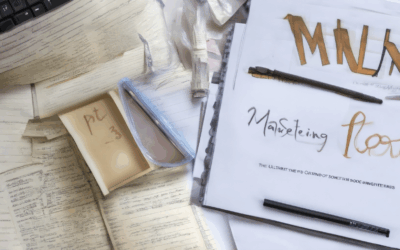Mastering fiction plot planning is essential for any writer aiming to craft a compelling and engaging narrative. Whether you’re working on a novel, short story, or even a script, a well-structured plot is the backbone of a successful story. This guide will walk you through the fundamentals of fiction plot planning, offering practical tips, tools, and strategies to help you refine your storytelling skills. From understanding the core elements of fiction plot to exploring innovative methods like the snowflake approach, we’ll delve into what makes a great plot and how to bring your ideas to life. Whether you’re a seasoned writer seeking refinement or a newcomer eager to get started, this comprehensive guide has something for everyone. Let’s embark on a journey to master the art of fiction plot planning and unlock the potential of your creativity.
Key Takeaways
– Craft a Compelling Protagonist and Conflict: Start by defining your main character and central conflict to drive the narrative forward.
– Set the Scene with a Unique Setting: Choose a setting that enhances your story’s mood and themes.
– Develop a Memorable Antagonist: Create a formidable opponent to fuel your protagonist’s journey.
– Build Tension with Rising Action: Structure events leading to the climax, escalating in complexity and suspense.
– Reach the Peak with the Climax: Deliver the highest point of emotional engagement and tension.
– Resolve the Story Effectively: Conclude with a satisfying resolution that ties up loose ends.
– Adopt a Structured Approach: Use frameworks like the Three-Act Structure to ensure logical progression.
– Create Belvable Characters: Develop relatable, dynamic characters with growth arcs.
– Immerse Readers in the World: Use settings that feel authentic and enhance the narrative.
– Balance Conflict and Growth: Maintain pacing and focus on meaningful character development.
– Stake Your Reputation on High Stakes: Ensure stakes are personal and emotionally resonant.
– Deliver a Thoughtful Resolution: End with a climax that resolves conflicts or invites reflection.
– Ensure Consistency and Cohesion: Maintain a unified tone and universe throughout the story.
– Connect with Universal Themes: Reflect real-world issues or timeless themes for broader impact.

The Five Elements of Fiction Plot
A well-structured fiction plot typically consists of five key elements that work together to create an engaging and cohesive story. These elements are essential for keeping readers invested in the narrative. Below is a breakdown of each component:
- Exposition
The exposition is the foundation of the story, serving to introduce the setting, characters, and background information. This phase sets the stage for the rest of the plot, providing necessary context and hooking the reader’s interest. Examples include opening scenes that establish the world, introducing main characters, and hinting at the central conflict. - Rising Action
After the exposition, the rising action propels the story forward. This is where the protagonist faces increasing challenges and tensions. The rising action builds momentum, leading the reader toward the climax. Key moments in this phase often involve character development, escalating conflicts, and the gradual revelation of plot twists. - Climax
The climax represents the peak of the story, where the main conflict reaches its most intense point. This is the turning point where the protagonist confronts the central challenge or antagonist, leading to a resolution of the primary storyline. The climax can be dramatic, emotional, or even symbolic, depending on the nature of the story. - Falling Action
Following the climax, the falling action occurs as the story moves toward its conclusion. This phase involves resolving remaining subplots, wrapping up loose ends, and allowing characters to reconcile their experiences. The falling action can be peaceful or tumultuous, depending on the story’s tone and themes. - Resolution
The resolution ties up the story, providing closure for the characters and the audience. It answers unanswered questions and confirms the outcomes of the narrative. A strong resolution leaves readers satisfied, whether it’s through a happy ending, an open ending, or a bittersweet conclusion.
By mastering these five elements, writers can craft stories that captivate audiences and leave a lasting impression. Each element plays a vital role in shaping the overall arc of the narrative, ensuring that the story feels complete and purposeful.
Learn more about storytelling techniques and narrative development
What Are the 5 Essentials of Plot Structure?
The plot structure is the backbone of any story, providing a clear and organized framework that guides the audience through the narrative. While various theories propose different elements, there are five fundamental components that every effective plot should include. Understanding these elements will help you create a compelling and cohesive story.
1. Exposition
The exposition is the foundation of the plot, introducing the setting, characters, and the central conflict or problem. This phase sets the stage for the rest of the story, providing necessary background information and establishing the stakes. Without a strong exposition, the audience may struggle to connect with the story or understand the motivations of the characters.
2. Rising Action
The rising action is the sequence of events that build tension and lead up to the climax. This phase introduces complications, challenges, and conflicts that drive the story forward. It’s during this phase that the protagonist typically faces their greatest obstacles, often leading to moments of high drama and emotional investment from the audience.
3. Climax
The climax represents the peak of the story, where the central conflict reaches its most intense point. This is where the protagonist confronts the major challenge or antagonist, leading to a resolution of the primary conflict. The climax is often the most anticipated part of the story, as it determines the outcome and leaves a lasting impression on the audience.
4. Falling Action
After the climax, the falling action occurs as the story begins to resolve the conflicts and conclude. This phase wraps up loose ends, reveals the true nature of the events, and brings closure to the characters and their journeys. The falling action should feel natural and satisfying, leaving the audience with a sense of completion.
5. Resolution
The resolution answers the questions raised in the story and provides closure for the characters and plot. It confirms the outcomes of the conflicts and leaves the audience with a final impression. A well-crafted resolution ties together all the elements of the plot, reinforcing the themes and emotions explored throughout the narrative.
How to Apply These Essentials
To create a successful plot structure, consider the following tips:- Character Development : Invest time in developing your protagonist and supporting characters. Their growth and interactions will drive the story forward.- Theme Integration : Ensure your plot aligns with a clear theme, as this will give your story depth and meaning.- Pacing : Balance the exposition, rising action, climax, falling action, and resolution to maintain engagement and keep the audience invested.
By mastering these five essentials, you can craft a plot that captivates audiences, keeps them hooked, and leaves them with a lasting impact.

The Snowflake Method in Fiction
The Snowflake Method is a creative writing technique designed to help authors construct a well-structured and engaging narrative. This method emphasizes building a story from a central idea, much like a snowflake growing from a tiny seed. Here’s a breakdown of the process:
- Identify the Core : Begin with a single, compelling idea or moment that serves as the heart of your story. This core should grab the reader’s attention and set the stage for further development.
- Develop the Core : Expand the core into a more detailed scene or chapter. This step establishes the setting, introduces key characters, and lays the groundwork for the plot.
- Branch Out : From the developed core, create subplots or subthreads. These branches explore different aspects of the main plot or delve into the characters’ backgrounds, adding depth and complexity to the story.
- Expand Each Branch : Further develop each branch into individual scenes or chapters. This phase introduces conflicts, challenges, and subplots, driving the narrative forward and adding tension.
- Outline and Refine : Create a comprehensive outline of the entire structure, ensuring that all elements connect logically and flow smoothly. This step is crucial for maintaining coherence and readability.
The Snowflake Method allows for gradual growth of the story, enabling authors to explore their ideas thoroughly while maintaining a clear and engaging structure. This approach is particularly useful for epic tales or series, allowing for the slow and deliberate expansion of settings, characters, and themes.

How to Create a Fictional Plot
To craft an engaging and compelling fictional plot, follow these structured steps:
- Identify the Protagonist and Conflict: Begin by selecting your main character and the central conflict they will face. This could involve a quest, personal growth, or overcoming adversity.
- Establish the Setting: Choose a unique location that serves as the backdrop for your story. This setting should reflect the mood and themes of your plot.
- Create the Antagonist: Develop a formidable antagonist or opposing force that will drive your protagonist through their journey.
- Outline the Rising Action: Build a series of events leading up to the climax. These events should escalate in tension and complexity.
- Develop the Climax: Reach the peak of your story where the protagonist faces their greatest challenge and resolves the central conflict.
- Conclude with Resolution: Wrap up the story with a satisfying conclusion that ties together loose ends and leaves a lasting impression.
Example Plot Structure:
1. **Discovery:** A young archaeologist stumbles upon an ancient artifact in a forgotten city.
2. **Journey:** They team up with a knowledgeable professor and navigate hidden tunnels beneath the city.
3. **Challenges:** Face obstacles such as traps and rival scholars seeking the artifact’s power.
4. **Climax:** Confront a shadowy figure in an abandoned temple who holds the key to the artifact’s origins.
5. **Resolution:** Discover the artifact’s true purpose and its connection to an ancient prophecy.
This method ensures a logical flow and keeps readers engaged from beginning to end.
The 7 Point Plot Structure
The 7 Point Plot is a story structure framework used to analyze and evaluate the effectiveness of a story. It was created by screenwriter and storytelling expert David Tosh. Here’s a breakdown of the seven key components:
- Objective
- Clearly define the protagonist’s primary goal or desire. This serves as the driving force of the story.
-
Bait
- Introduce an intriguing hook or situation that immediately engages the audience and sets the stage for the story.
-
Set-Up
- Develop the backstory, introduce supporting characters, and establish the world in which the story unfolds.
-
Conflict
- Present the central problem or challenge that the protagonist must overcome. This creates tension and stakes.
-
Peak
- Reach the highest point of emotional engagement and tension, often through a critical moment or event.
-
Resolution
- Conclude the story satisfyingly, resolving the main conflict, and tying up loose ends.
-
Theme
- Identify the underlying theme or moral of the story, ensuring it resonates with the audience.
This structure helps writers and filmmakers understand the essential elements of a compelling narrative, ensuring that stories are engaging, emotionally resonant, and structurally sound.
James Whitfield Thomson

What Makes a Good Fiction Plot?
A well-crafted fiction plot is essential for capturing readers’ attention and creating an engaging narrative. Here are the key elements that contribute to a compelling fiction plot:
1. Clear Structure
A strong fiction plot typically follows a clear structure, often referred to as the three-act structure. This framework ensures that the story progresses logically from the setup, through the confrontation, to the resolution.
2. Well-Rounded Characters
Developing relatable and dynamic characters is crucial. Readers connect with protagonists who undergo growth, exhibit flaws, and face meaningful challenges. Supporting characters should complement the protagonist, adding depth and complexity to the story.
3. Engaging Setting
The setting serves as the backdrop for the story and should feel immersive. Whether it’s a historical epoch, a futuristic world, or a small-town community, the environment should enhance the plot and reveal character traits.
4. Conflict and Tension
A central conflict drives the plot forward. This conflict should escalate naturally, creating suspense and keeping readers invested. Subplots can add layers to the main storyline, enriching the narrative experience.
5. Pacing
Balancing action with descriptive passages ensures the plot moves smoothly. Too fast, and details are overlooked; too slow, and readers lose interest. A steady pace keeps the story engaging and maintains momentum.
6. Character Growth
Growth arcs allow characters to evolve, giving the story emotional weight. Whether the protagonist learns resilience, forgives past wrongs, or confronts their fears, meaningful growth strengthens the narrative.
7. Unique Stakes
The stakes should feel high enough to motivate the protagonist’s actions but not so overwhelming that the story becomes implausible. Personal, emotional stakes often resonate most with readers.
8. Climax and Resolution
The climax should resolve the main conflict, offering closure or leaving room for reflection. An ambiguous ending can provoke thought, while a satisfying one provides a sense of completion.
9. Consistency and Cohesion
Maintaining consistency in tone, style, and universe-building ensures the story feels cohesive. Logical progression of events and character behaviors helps readers stay engaged.
10. Relevance and Relatability
Fiction plots that reflect real-world issues or universal themes resonate with audiences. When readers can relate to the themes or situations, the story becomes more impactful.
By focusing on these elements, authors can craft a fiction plot that captivates readers, explores complex ideas, and leaves a lasting impression.





0 Comments